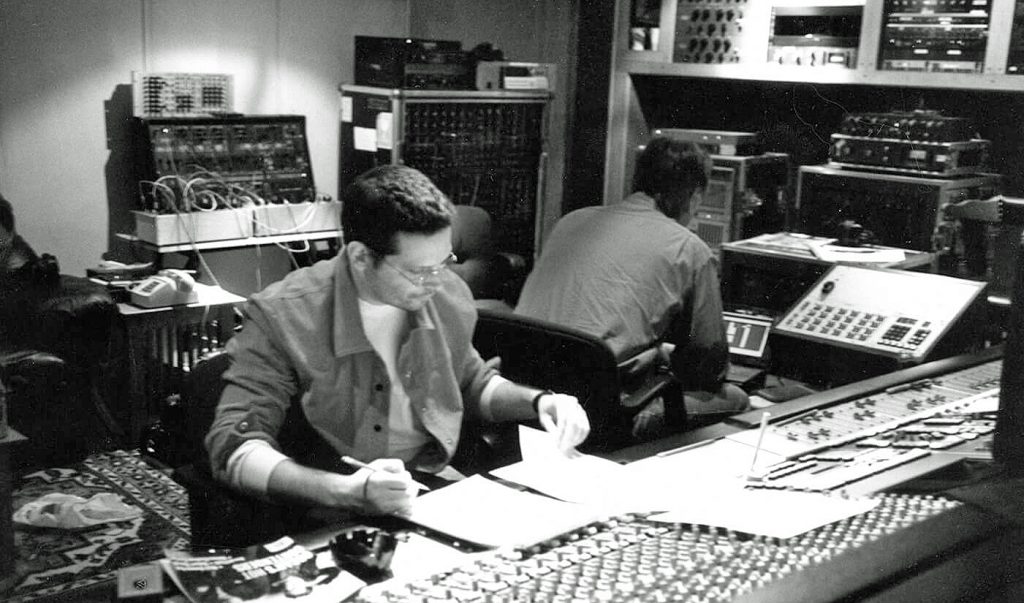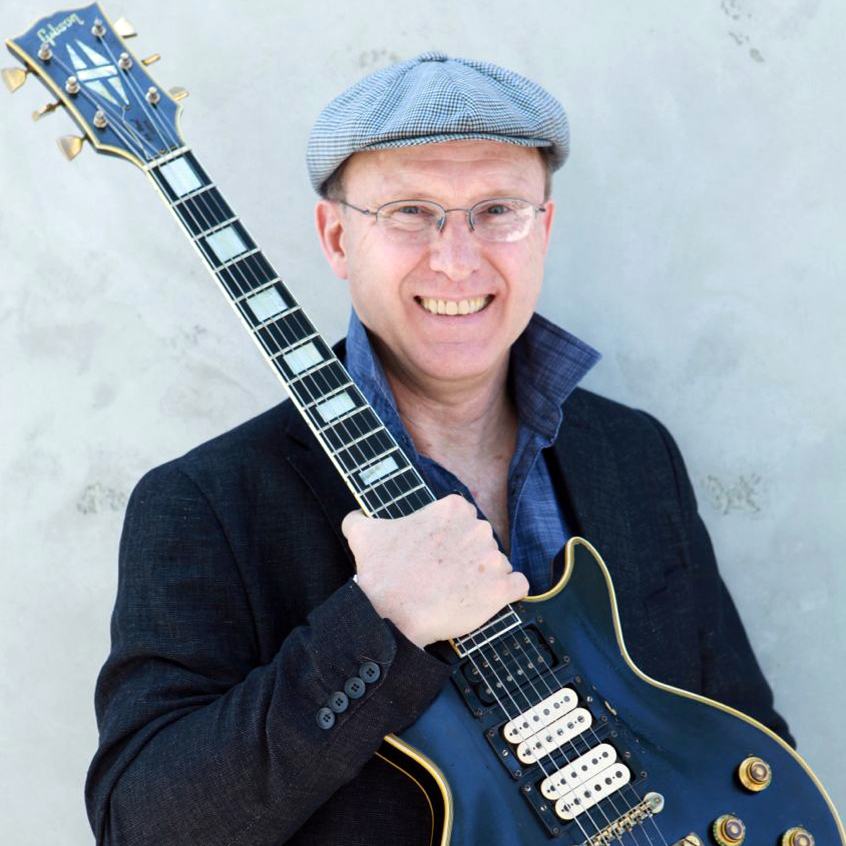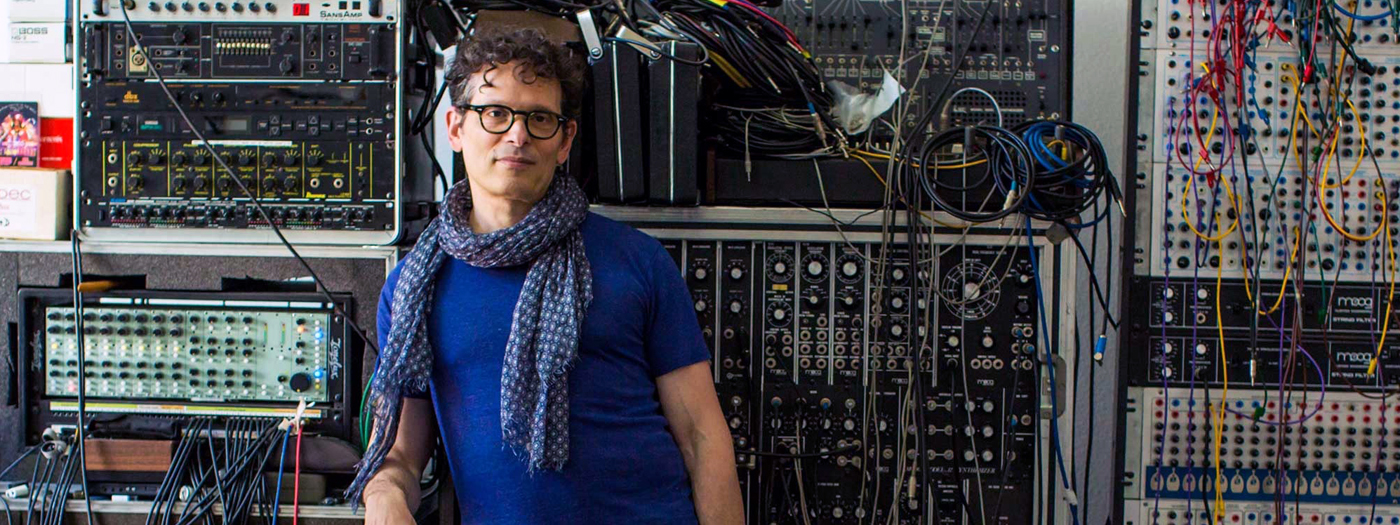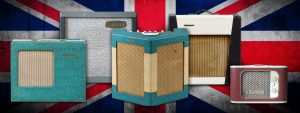How Producer Michael Beinhorn Records Humongous Walls of Guitar
by Barry Cleveland
Michael Beinhorn has produced records for rock icons such as Soundgarden, Aerosmith, Ozzy Osbourne, Hole, Korn, and the Red Hot Chili Peppers—and one defining characteristic of his production style is what he refers to as “humongous walls of guitar.” Here, Beinhorn details his approach to recording rock guitars, from his overall philosophies to specific techniques and gear choices.
Do you have an overall philosophy when it comes to recording guitarists?
I feel it’s important to capture as much of how a guitarist sounds as possible. And it’s not just about the guitar, the amp, pedals, and things like that. It always comes down to the individual. I’ve had this proven repeatedly, because I’ve had different guitarists play through the same rig and heard how drastically the sound can change from performer to performer. There’s also just how people hold their instrument, because everyone holds it slightly differently. The way that they grab the guitar, press it against their body, fret and pick, all cause the instrument to resonate in different ways. I take all of those things into account when I’m recording.
What is your primary technical goal when recording rock guitars?
First of all, I love detail on all instruments. So, when I’m recording guitars they have to compete with everything else that I’ve recorded up to that point, including drums, which obviously occupy a broad frequency range. The guitars will need to sit with the drums and other sounds and be clearly discernable within their own space. I want to hear detail in the guitars, and I want them to be present. That’s why I don’t like guitars recorded with ambient mics and room sound, because the room sound tends to cloud up the detail. Of course, there are people who have been able to record ambient guitar sounds and make them work extremely well within a dense mix. Led Zeppelin records come to mind.
So, you like to position the mics close to the speakers?
Yes. I have always preferred to position the capsules right up on the speaker grill, dead center on the speaker cone, because that’s where all the definition and presence are. As you start to move away from that it tends to muddy the sound up a little bit.
And if you are using two mics, you put them on two different speakers?
Yeah, two different speakers. And I’ve found that with a 4×12 or a 4×10 cab there are usually no more than two speakers that are good. Typically, there will be one that sounds great, one that sounds really good, and the other two are just meh or even bad. Once in a while there will be a cabinet with only one good speaker, and then I’ll have to determine whether it’s going to be better if I just pick a single mic and live with it, or if I want to use two mics on that single speaker.
If you use two mics on a single speaker, do you position them close together?
Yes, usually very close. Sometimes it makes sense to angle the microphones a little, though then you’re invoking phase issues. Occasionally, I have purposely put mics out of phase to get a kind of honky tone that I like, but in general it isn’t a recommended practice.
Do you typically record guitars in mono or stereo?
It varies, but I usually combine everything down to one mono track per performance just so that there isn’t too much confusion in the stereo field and everything occupies its own space.
“You may have an idea of what will happen and then get knocked on your butt by something incredible that you weren’t expecting.”
So, when you use multiple mics you’ll record them all to a single mono track?
I feel that’s preferable, yeah.
Do you primarily rely on microphone placement to capture the sound of the amp while tracking, or do you sometimes also equalize?
To me it has always been about having the right combination of things. Microphone placement is crucial, though it matters less if you don’t have a great mic preamp paired with the right mic. And sometimes it can be fun to also have a great equalizer with that mic preamp. Of course, in some situations if you add even a touch of EQ you’ll be taking a step backwards from where you were, and that’s obviously not good.
Do you feel the same way about tracking with compression?
Yes, it’s a case-by-case thing. And there are so many options. Do you want compression inline? Do you want compression before the amplifier? Do you want compression after the amplifier going down to your recording system? Would it be preferable to add compression once the recording has been done? And other considerations may also determine your choice, like where the compressor is placed in relation to other effects. For example, do you compress before or after a delay?
Do you print in-line guitar effects while tracking?
Typically, yes, I think it is optimal to keep the guitar effects chain integrated into the signal path. If you add effects post recording, then you’re not dealing with the same sound anymore. For example, a delay pedal going through an amplifier is obviously going to sound a hell of a lot different than adding delay after it’s been recorded. They are two entirely different things. I feel that a conscious choice has to be made beforehand. If you feel that you’re going to get a better sound by processing after recording, then you should do it that way.
Your point about effect order also obviously extends to effects pedals.
Yeah. And If you have multiple effects pedals in the inline signal chain, experimenting with that order can lead to some big surprises. You may have an idea of what will happen and then get knocked on your butt by something incredible that you weren’t expecting. To me, these are the things that make recording fun.
Is layering a technique you use much? And if so, how many tracks are too many?
My preference is to have only one guitar per side, though at times I have had two, and there have even been rare cases where I’ve gone for three just because the third guitar added something so special. My feeling is that each guitar track should be immense, the two tracks are going to complement one another, and they’re going to create the sound I want as they are. If I have to do more than that, then I’m clearly not doing enough on the individual tracks. To me, it’s like you have these great guitars. You’ve got these great amps. You’ve spent all this time trying to get the recording to sound a certain way. And now you want to muddy it up by adding these stacks and stacks of guitars? Because when you do that you get a lot of smearing, you lose the detail, and you wind up with diminishing returns. That has been my experience anyway.

Technically speaking, why is less often more when it comes to layering?
The precise moment that a player hits the guitar is based on their nervous system and how they respond to stimuli, so no matter who the guitarist is, each time they play the same part there will be variances of up to several milliseconds, and that will affect the group of tracks tremendously. Besides the blurring and smearing and other audio issues, you’re also fighting with the groove at that point. And the groove is something that you really want to be concerned about, because that’s one of the things that makes a song listenable. There are so many reasons why it’s not a good idea to stack guitars.
Can you get a big sound with small amps?
My experience has varied. It just depends on what you’re recording over, what your rhythm section is like. In some cases, I found that with a really powerful rhythm section, I can get away with recording two combo amps. In other cases, it doesn’t matter how many combo amps I have, they’re just not pushing enough air, and there’s not a sense of credibility with them.
So, you typically prefer bigger amps when recording. Turned up loud?
Yes. I actually like to record all the instruments quite loud, which is not as easy as recording at lower volumes, and requires much more focus.
Are there certain microphones that you tend to match with particular amps?
There are a few mics that I tend to go with because I’ve gotten good results in the past, but if I have an opportunity to try others I will, just to see what they’re capable of and what they might do for us on the particular recording I’m working on.
What are a few of your go-to microphones?
Although I don’t use it very often there’s the ubiquitous Shure SM57, which as everyone knows has a terrific high-midrange presence and sizzle that’s hard to beat when miking a guitar amp. Another microphone I like a lot, but don’t use all the time, is the Audio-Technica AT4047 condenser, which has a very quick transient response. Then there’s the Royer R-122, which is a modern ribbon microphone that can handle tremendous volume levels and is also quite fast for a ribbon mic. It really captures the roar, density, and impact of an amp in a way that a lot of other mics can’t. Finally, one of my all-time favorite amp mics is the RCA BK-5, either A or B, which is a 1950s ribbon microphone that can withstand immense SPLs without shredding. It has a unique midrange presence that really complements an SM57, so they work together beautifully. Oh, and there’s the RCA KU-3A, which may be the best ribbon microphone I’ve ever heard. It’s a ’50s and ’60s-era mic that was used to capture film dialogue. You can’t use it on loud amps without toasting the ribbon, but for clean guitar it is absolutely gorgeous sounding.
How about microphone preamps?
I like the ’70s-era API 312s very much, because they are really speedy and have a lot of punch. I also really like the Neve 1058s with germanium transistors. I have four of those. The germanium Neves have a much grittier sound than the silicon transistor Neves like the 1073s, 1066s, and 1081s, which sound much smoother. That grittiness gives them greater detail and density, and in my mind makes them absolutely appropriate for guitar and bass recording. Mine are different than regular 1058s, though, because they don’t have an input-stage transformer and they have Marinair transformers on the output stage rather than Gardners transformers, which gives them a really special sound. I’ve also got some really esoteric stuff like Wally Heider WHR Studio 4 API modules modified by Frank DeMedio, and some DeMedio-modified APIs from the console at Sunset Sound, all of which sound exquisite.
When crafting humongous walls of guitar, how much distortion is too much?
It depends on the context and what the player is going for, but in terms of creating a huge guitar sound generally, you can quickly get to a point of diminishing returns. For example, as anyone who has ever plugged a fuzz or distortion pedal into a guitar amp that’s already really distorted can tell you, once the pedal distortion hits the amplifier distortion it causes the amp circuits to compress even harder than they would naturally, and that will cause the sound to diminish in size and overall power, as well as diminish transient response and punch. Doing things like that indiscriminately runs contrary to recording properly, where you’re actually listening and trying to discern what it is that you’re getting in relation to what it is that you are after. A lot of people don’t think in those terms. They just think guitar, fuzz box, amplifier. Boom. Got it!

Barry Cleveland is a Los Angeles-based guitarist, recordist, composer, music journalist, and editor-in-chief of Model Citizens and The Lodge, as well as the author of Joe Meek’s Bold Techniques and a contributing author to Stompbox: 100 Pedals of the World’s Greatest Guitarists. Barry also served as an editor at Guitar Player magazine for 12 years and is currently the Marketing Communications Manager at Yamaha Guitar Group. barrycleveland.com
Related posts
Leave a Reply
You must be logged in to post a comment.
By submitting your details you are giving Yamaha Guitar Group informed consent to send you a video series on the Line 6 HX Stomp. We will only send you relevant information. We will never sell your information to any third parties. You can, of course, unsubscribe at any time. View our full privacy policy





This man is a legend